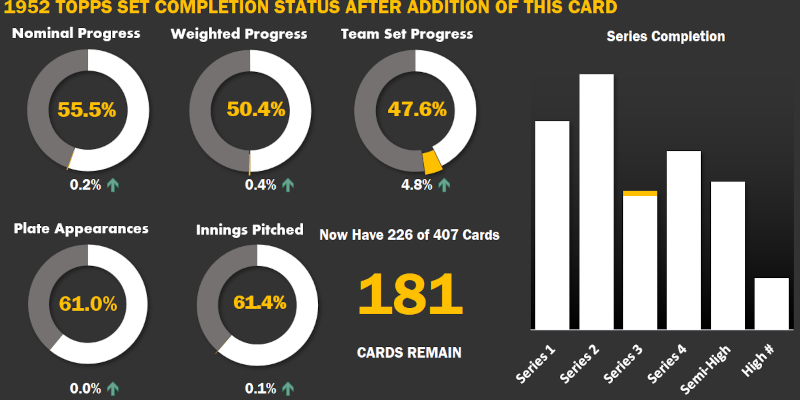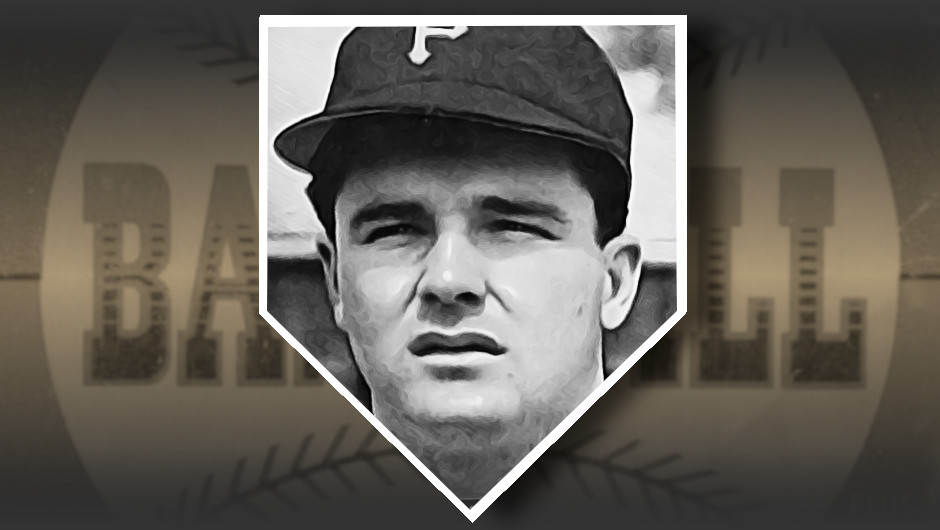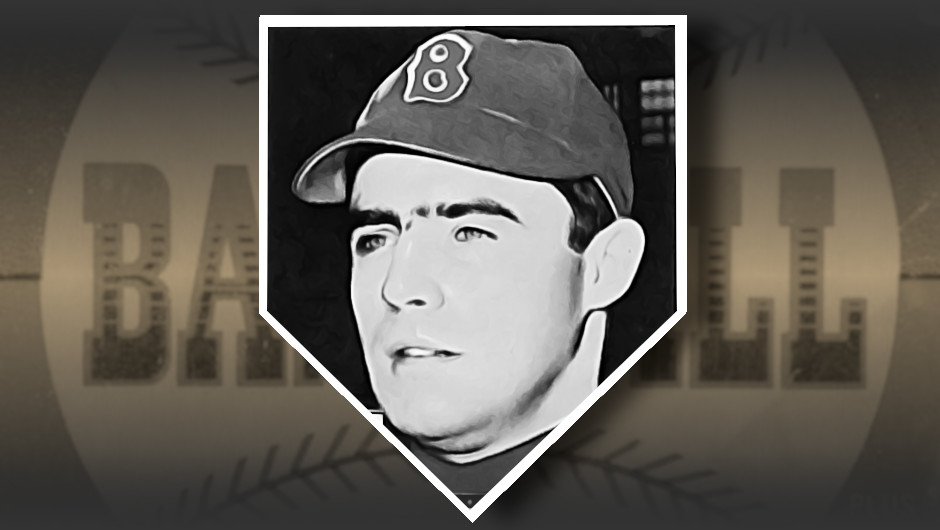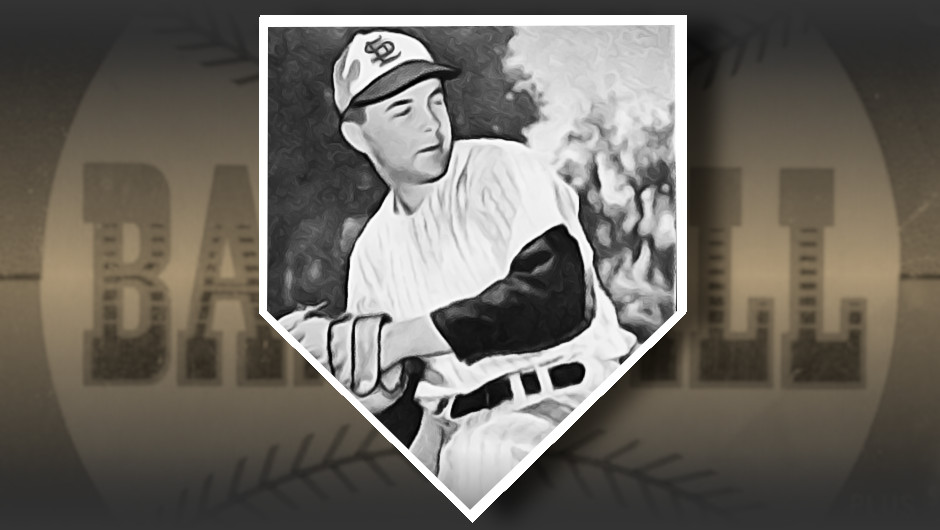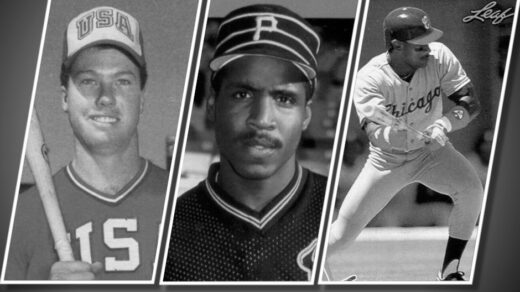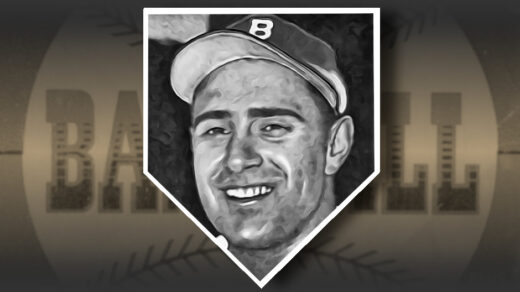John Hamm, the actor of Don Draper/Mad Men fame, has a long association with baseball. He grew up going to Cardinals games and rooting for the team at Busch Stadium. His best friend happened to be the son of Hall of Fame catcher Ted Simmons. Hamm is a regular player in a recreational wood bat league and has even appeared in his own episode of The Hall of Very Good.
Despite a starring role in Million Dollar Arm and narrating multiple St. Louis-themed sports films, his devotion to the game is not the characteristic by which he is introduced. Many of Hamm’s roles are centered around his character being physically attractive. This has become such a defining part of his career that they have become a running gag woven through multiple comedic appearances. Multiple Emmy nominations arrived for his work in 30 Rock in which he plays an incompetent character oblivious to the fact that everything works out for him because others find him handsome.
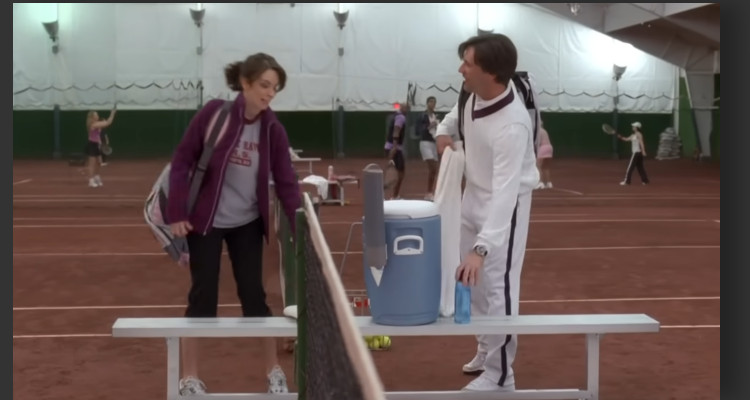
The first of these appearances saw his character take to a tennis court as part of a date. Before flailing wildly at the ball he confidently tells Tina Fey that he has worked as a tennis pro in college, a position that he earned because “all the other kids’ moms kept asking for lessons.”
Perhaps there is a baseball equivalent here.
Clarence Marshall was pitcher who could be described accurately as flailing on the mound. He possessed extraordinary heat on his fastball, but lacked any ability to direct where it could go. The Yankees brought him up for several cups of coffee in the late 1940s, but he spent most of his time playing in minor league ballparks. Despite having little control over his pitches, observers seemed more focused on his appearance. His MLB debut was followed by the offer of a full-time film contract with MGM, which he turned down (happens all the time, right?). Teammates noted the number of women trying to meet Marshall after games, teasing him about how that they wanted to “cuddle” with the pitcher. Before the season even began he was nicknamed “Cuddles.”
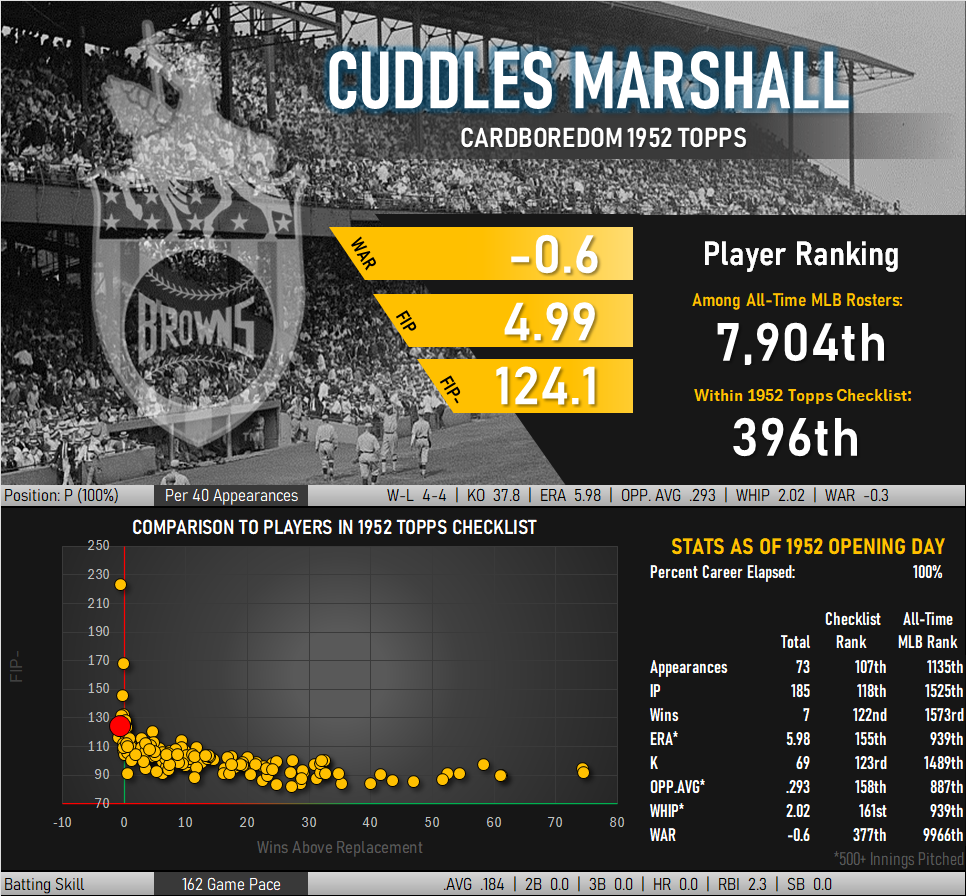
Cuddles’ Unlikely Appearance in 1952 Topps
Given this statistical backdrop, Marshall’s grasp on a big league career looked tenuous. The stats on the back of his ’52 Topps baseball card show a guy who allowed multiple hits per inning, almost as many walks, few strikeouts, and a run in 2 out of every 3 innings he pitched. Not only that, he hadn’t thrown a big league pitch since a disastrous 53-inning campaign in 1950 (7.88 ERA). It’s a wonder how this card even made it into the checklist.
Marshall wasn’t even operating under an MLB contract. The Browns had removed him from their roster, optioning him to an International League team when it became likely that he would be drafted into military service. The move proved prescient, as noted by the “In Military Service” designation written across an otherwise blank 1951 statistical line. He wouldn’t get back to civilian life until the year after this card was made. While the Browns signed him back to the team, he spent the year bouncing between a few minor league clubs. A bad automobile crash subsequently ended his baseball career at the end of the season.

This card is one of several in which the photography appears sourced from an earlier New York Yankees’ spring training facility. The same deciduous background can be seen in the card of pitching coach Jim Turner and multiple teammates. The image of Marshall’s Yankee pinstripes has been altered a bit to give the appearance of brown sleeves, as well as a rather obvious fabrication of a St. Louis Browns cap. Still, Topps must have known its audience. Lots of moms threw out their kids’ baseball card collections. Judging from the tape affixed to my card, some those moms apparently tucked a Clarence Marshall card into a scrapbook before ditching the rest.
